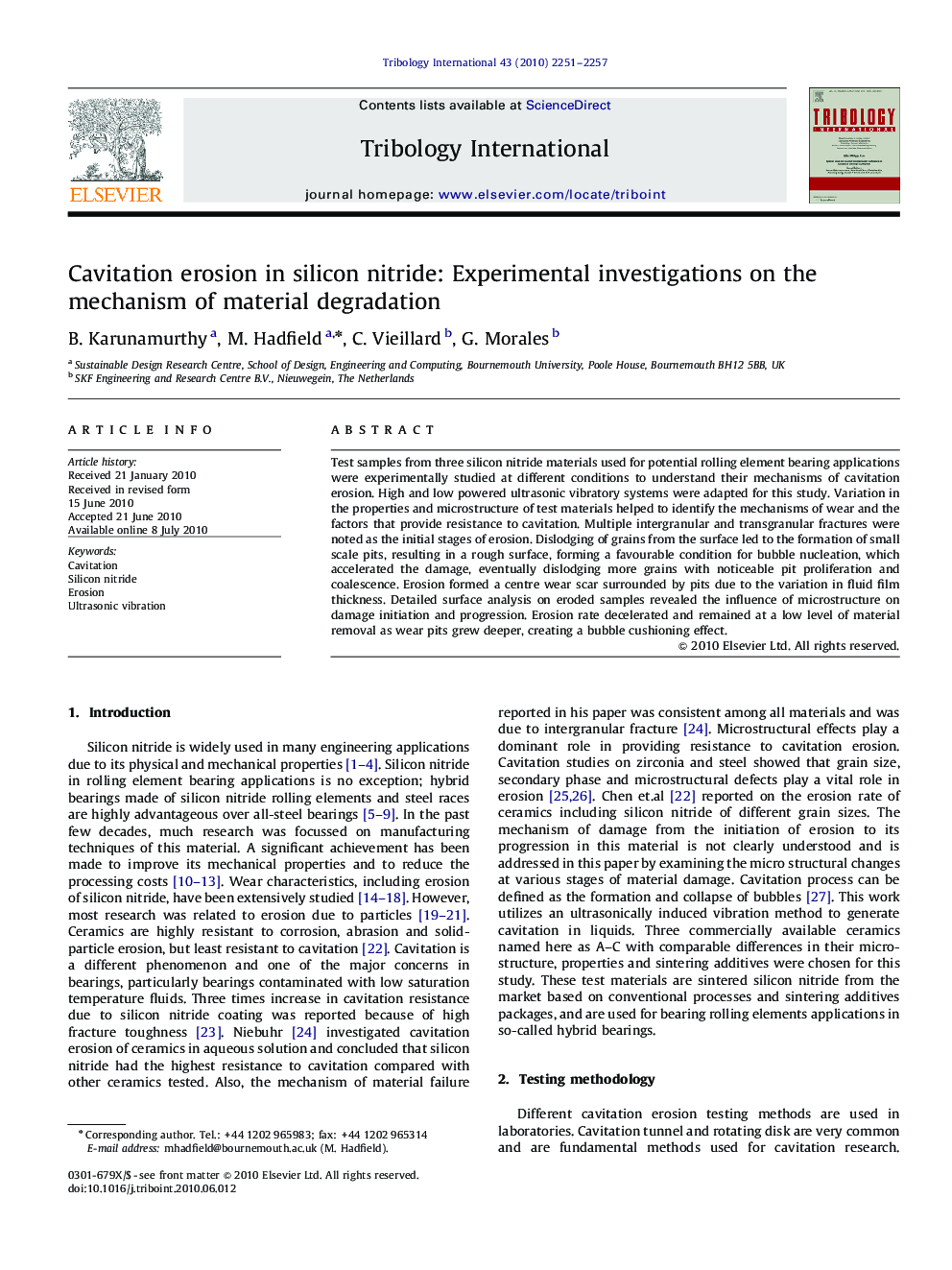| Article ID | Journal | Published Year | Pages | File Type |
|---|---|---|---|---|
| 615794 | Tribology International | 2010 | 7 Pages |
Test samples from three silicon nitride materials used for potential rolling element bearing applications were experimentally studied at different conditions to understand their mechanisms of cavitation erosion. High and low powered ultrasonic vibratory systems were adapted for this study. Variation in the properties and microstructure of test materials helped to identify the mechanisms of wear and the factors that provide resistance to cavitation. Multiple intergranular and transgranular fractures were noted as the initial stages of erosion. Dislodging of grains from the surface led to the formation of small scale pits, resulting in a rough surface, forming a favourable condition for bubble nucleation, which accelerated the damage, eventually dislodging more grains with noticeable pit proliferation and coalescence. Erosion formed a centre wear scar surrounded by pits due to the variation in fluid film thickness. Detailed surface analysis on eroded samples revealed the influence of microstructure on damage initiation and progression. Erosion rate decelerated and remained at a low level of material removal as wear pits grew deeper, creating a bubble cushioning effect.
